Virtually all multiplier reels have a drag or clutch and it will usually be one of two types – star or lever. Manufacturers such as Ocean City (remember them?) have played around with different systems and more recent examples are the hybrid mechanisms of Abu’s Synchro or Shimano’s Speedmaster.
The star drag is the most common with one reason being that it is cheaper to produce than a lever drag. You generally get what you pay for though and the quality of star drags varies from rubbish to fantastic. At one time, lever drags were only available on exotic big game reels. They were developed for applying set levels of pressure when using a “Line class” outfit on pelagic species that run far and fast. In the 70’s, Policansky were possibly one of the first manufacturers to offer a lever drag reel at “high street” prices, but they didn’t win critical acclaim and it was not until the late 80’s that the Shimano TLD reels brought a reliable, reasonably priced lever drag to the UK. Since then, many more models from different manufacturers have appeared at all levels in the market and the statement about star drag quality now applies equally to lever drags.
So, what are the benefits of each system? I had pretty well defined views on this subject but over the last few of years I have tried both systems side by side with an open mind. I wouldn’t say that this has changed my thinking totally, but it has certainly opened my eyes as developments in both systems are making the defining rules a bit blurred!
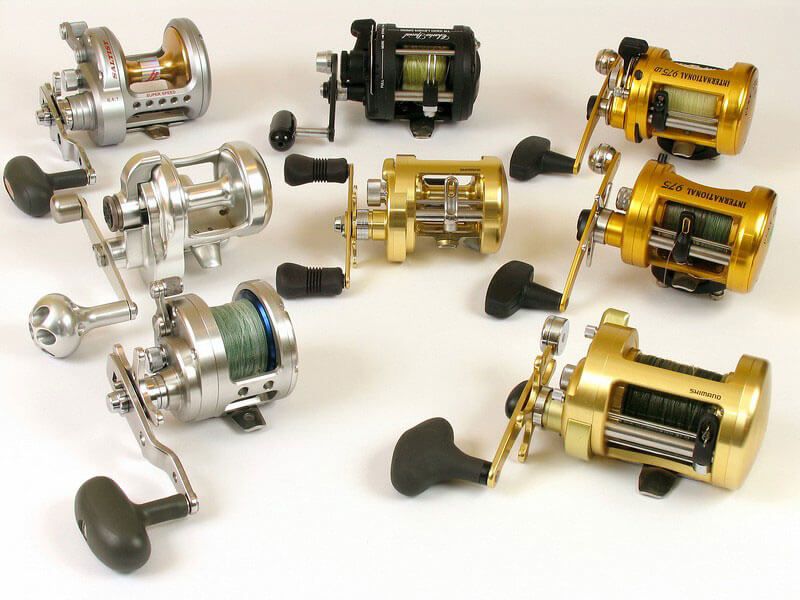
Lever and star drags are quite different mechanically. Looking at the picture of two of my Penn 975’s we can see the differences in the components that make up the drag systems. Most obviously, there is only one fibre washer in the lever drag, but it is much bigger than the star drag washers. The lever drag washer lives on the end of the spool, the star drag’s washers live inside the main gear. Bigger spool diameters give a bigger washer diameter for lever drags; a bigger main gear diameter has the same effect for star drags. There are other factors to be considered, but surface area along with diameter is extremely important. Less is definitely not more when you’re talking drag systems.
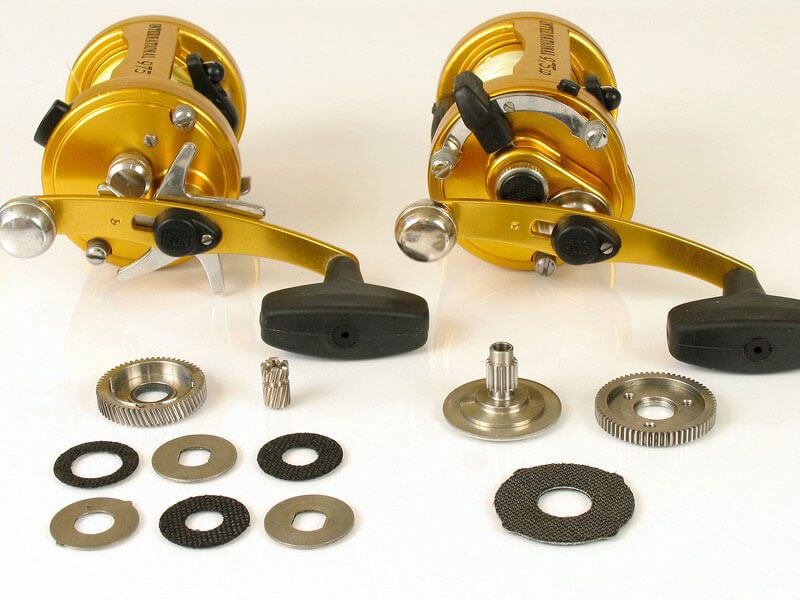
Lever drags, as previously noted, were designed for big game fish and most therefore have a stop for the lever representing the “strike” position. This is preset to 33% (usually) of the line test. The stop can usually be depressed allowing the lever to be moved to the full or “sunset” in big game talk, position. Some anglers also mark the position of settings such as 25% but we should not get bogged down with all this; in short, a lever drag is pre-set and can be used to quickly move between known settings. The settings are achieved by pulling against a spring balance with the reel mounted on your rod of choice. The drags pre-load is adjusted to attain the required pulling force when the lever is at the strike position. The lever drag is not designed to be infinitely variable between fully off and totally locked; it moves between free and the maximum pre-set. As the lever is moved, it operates a cam which in turn applies the pre-set pressure to the drag washer. This cam’s profile dictates how much drag is applied for each degree of rotation of the lever. A shallow profile has gentle application without great range, whilst a steeper profile will have a greater range but will not be so progressive. The Shimano Torsa is available with different cams to suit different uses. It is probably beyond the scope of most UK applications, but is never the less another valid development. In most lever systems, such as the Penn 975, the drag washer is sandwiched between two plates. One plate is the end of the spool while the other plate has the pinion gear mounted on it. This is driven by the reel handle via the main gear. This is one reason why so many lever drag reels have straight cut gears. The axial side loads created by helical gears under pressure can alter the force applied on the drag washer. Most drag systems push against the washer, forcing it against the spool. This imparts side load on the spool and its bearings. Accurate are one manufacturer who have overcome this. Their reels have a twin-acting drag that applies pressure to two drag washers, one on each end of the spool, sandwiching it with a balanced load.
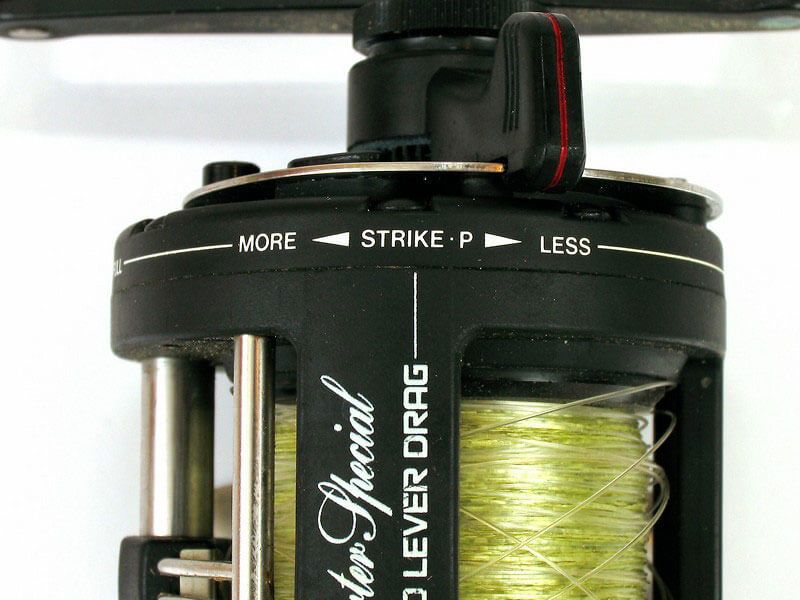
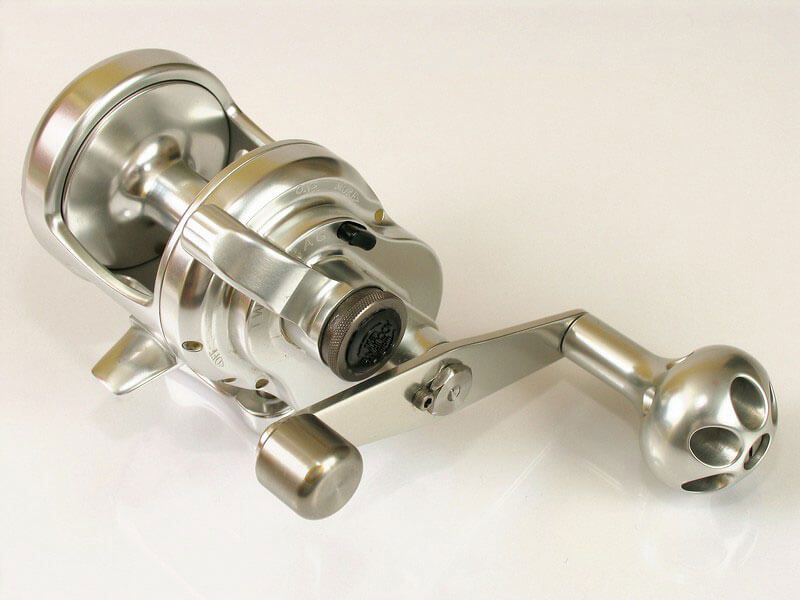
Achieving true free spool has often been a problem for lever drag reel designers. This is because to run a high drag pressure means there is still pre-load on the bearings and drag washer when the lever is backed off to the “free” position. When a manufacturer quotes a maximum drag pressure for a lever drag reel, this generally means the maximum attainable whilst maintaining a true free spool setting.
Star drags, unlike lever drags, are designed to operate from full on to full off simply by applying pressure to the drag washers by winding the star wheel along a screw thread. Generally, with a star drag, the more washers you have the better the drag as it will have a greater range of settings. I have greatly improved a number of my reels by switching the drag washers to those available from “Smooothdrag” in the USA which are cheap and silicon impregnated. The Carbontex washers they also sell are superb and many are now available in the UK. Shimano have used greased drag washers in some of their reels. As well as making the drag smooth, it also keeps corrosion at bay. Penn’s HT100 material on the other hand is dry from the factory but can be greased with proprietary drag grease. The smoothest example of a star drag that I have seen straight from the factory is in the Daiwa Saltiga. This reel has a “wet” drag employing up to eight drag washers, some of which are impregnated with lubricants. Star drag reels do not have any free spool problems; the spool turns independently of the drag when the drive is disengaged.
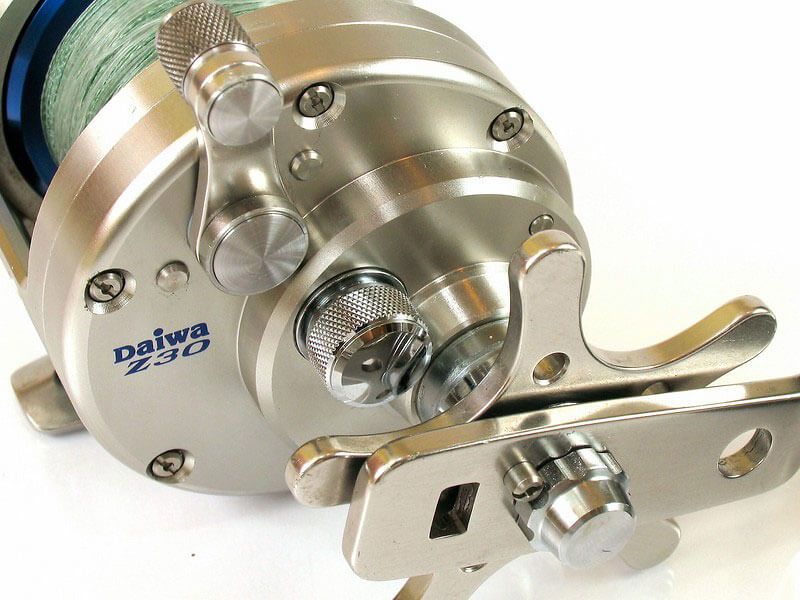
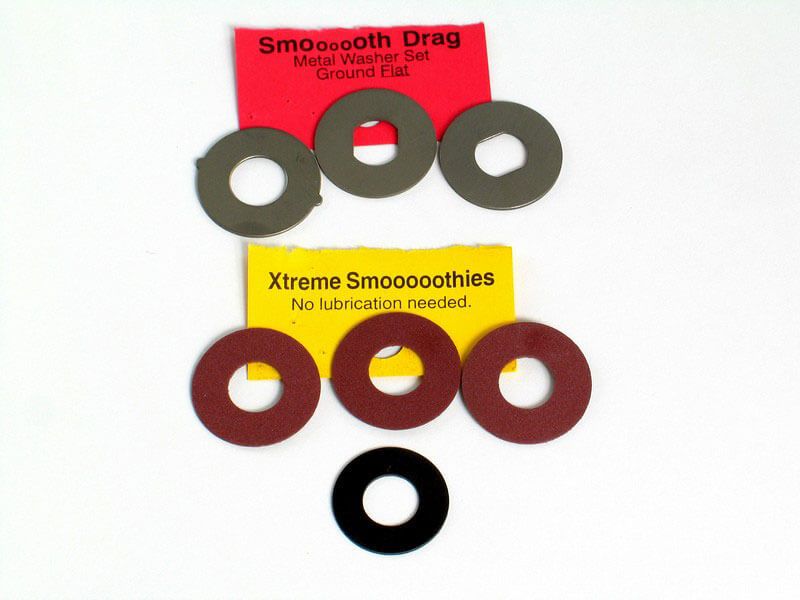
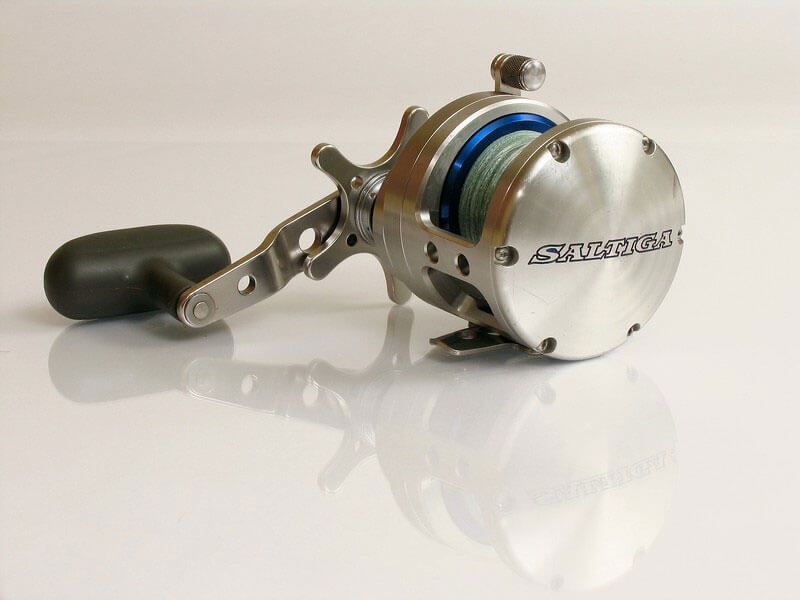
The disadvantage of a star drag is that whilst you can set the drag to a known pressure, if you change the setting whilst winding in a fish, it is almost impossible to get back to that setting whilst the fight is still on. This may or may not be important to you. It depends on what you are fishing for and with what tackle.
So which is best? Like many things its horses for courses. In UK situations I have always felt that lever drags offer most advantages when sharking, fishing for big conger and common skate and perhaps, light tackle tope. Much of the fishing I do is on the drift for pollack, bass, bream, flatties and cod; none of which are renowned for their searing runs to the horizon. I fish with a lightly set drag, usually with braid, using my thumb to cushion the fight and only piling on the drag when necessary. I assume that the weakest link may well be the hook hold in the fish’s mouth, not the line. Because of this, I had always held the view that lever drag didn’t offer much advantage on the drift. I have though always liked lever drags for down-tiding especially for cod & rays. The lever drag can be set up like a “bait runner” by using the drags tension to just stem the pull of the tide and then moving the drag pressure up to a known setting when a bite comes along. This is much easier than slackening off a star drag to achieve the same thing. As I said earlier, over the last few years I have tried lever drag more for things like drift fishing for pollack & bass; I was pleasantly surprised. I set the strike position to a known value which would be the most pressure I would probably want. I then set the lever at a lighter position, using my thumb again when more pressure was needed, but knowing that a simple push of the lever would give me a known maximum drag setting.
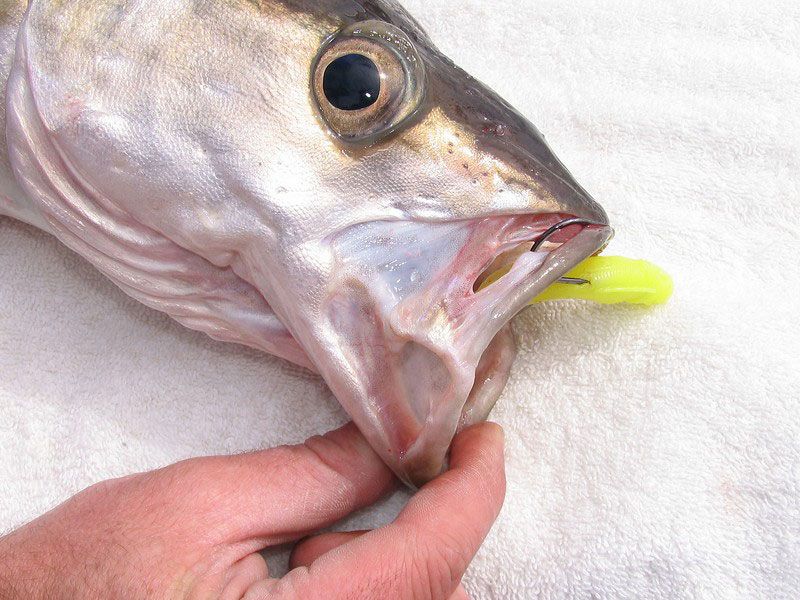
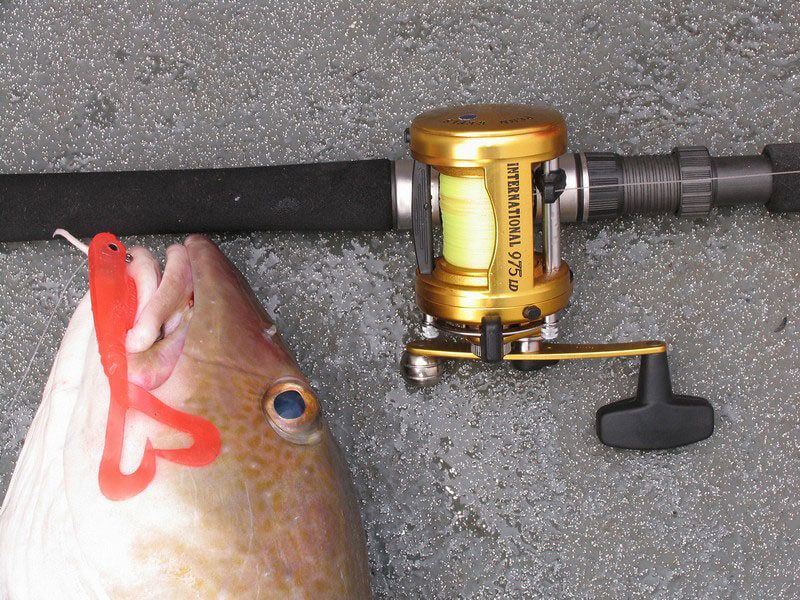
Many anglers I’ve met have trouble with the setting of a lever drag. They get annoyed with them and end up hating them. To help, I came up with a quick solution that can be achieved single handed and gives a repeatable setting. Put the reel on the rod, thread the line and tie it to something stout, preferably outside. Adjust the drag preset so that the strike position results in line being given when applying the maximum pressure you would apply to a hooked fish. To save you having to do this before every trip, just pull some line off the reel directly using a spring balance. Note the pull required. Now simply set the drag to that tension using a spring balance each time and you will have a repeatable system without the need to ask someone else to hold the balance whilst you pull against them. I have tried this loads of times and never had a problem. I know it isn’t the absolute correct way but it is quick and gets the job done. That said, I know people who just set their drag solely by feel – you pay your money, you take your choice!
With a good quality drag of either type, you will not be able to blame the reel if a fish escapes. It will either be something you did or didn’t do. For myself, apart from the sharking, big conger type fishing, I still prefer a good quality star drag most of the time. I like the idea of setting things up by intuition and I think that the educated thumb beats both systems for the types of fishing I do. Recent advances in star drag manufacture have only served to reinforce this. That said, the “bait-runner” setting of a lever drag reel means I still like them for many down-tiding situations. As to what is best for you, that depends on your fishing style and personal preferences but hopefully this feature has given you a bit of insight into the merits of each system.
The star drag is the most common with one reason being that it is cheaper to produce than a lever drag. You generally get what you pay for though and the quality of star drags varies from rubbish to fantastic. At one time, lever drags were only available on exotic big game reels. They were developed for applying set levels of pressure when using a “Line class” outfit on pelagic species that run far and fast. In the 70’s, Policansky were possibly one of the first manufacturers to offer a lever drag reel at “high street” prices, but they didn’t win critical acclaim and it was not until the late 80’s that the Shimano TLD reels brought a reliable, reasonably priced lever drag to the UK. Since then, many more models from different manufacturers have appeared at all levels in the market and the statement about star drag quality now applies equally to lever drags.
So, what are the benefits of each system? I had pretty well defined views on this subject but over the last few of years I have tried both systems side by side with an open mind. I wouldn’t say that this has changed my thinking totally, but it has certainly opened my eyes as developments in both systems are making the defining rules a bit blurred!

Lever and star drags are quite different mechanically. Looking at the picture of two of my Penn 975’s we can see the differences in the components that make up the drag systems. Most obviously, there is only one fibre washer in the lever drag, but it is much bigger than the star drag washers. The lever drag washer lives on the end of the spool, the star drag’s washers live inside the main gear. Bigger spool diameters give a bigger washer diameter for lever drags; a bigger main gear diameter has the same effect for star drags. There are other factors to be considered, but surface area along with diameter is extremely important. Less is definitely not more when you’re talking drag systems.

Lever drags, as previously noted, were designed for big game fish and most therefore have a stop for the lever representing the “strike” position. This is preset to 33% (usually) of the line test. The stop can usually be depressed allowing the lever to be moved to the full or “sunset” in big game talk, position. Some anglers also mark the position of settings such as 25% but we should not get bogged down with all this; in short, a lever drag is pre-set and can be used to quickly move between known settings. The settings are achieved by pulling against a spring balance with the reel mounted on your rod of choice. The drags pre-load is adjusted to attain the required pulling force when the lever is at the strike position. The lever drag is not designed to be infinitely variable between fully off and totally locked; it moves between free and the maximum pre-set. As the lever is moved, it operates a cam which in turn applies the pre-set pressure to the drag washer. This cam’s profile dictates how much drag is applied for each degree of rotation of the lever. A shallow profile has gentle application without great range, whilst a steeper profile will have a greater range but will not be so progressive. The Shimano Torsa is available with different cams to suit different uses. It is probably beyond the scope of most UK applications, but is never the less another valid development. In most lever systems, such as the Penn 975, the drag washer is sandwiched between two plates. One plate is the end of the spool while the other plate has the pinion gear mounted on it. This is driven by the reel handle via the main gear. This is one reason why so many lever drag reels have straight cut gears. The axial side loads created by helical gears under pressure can alter the force applied on the drag washer. Most drag systems push against the washer, forcing it against the spool. This imparts side load on the spool and its bearings. Accurate are one manufacturer who have overcome this. Their reels have a twin-acting drag that applies pressure to two drag washers, one on each end of the spool, sandwiching it with a balanced load.


Achieving true free spool has often been a problem for lever drag reel designers. This is because to run a high drag pressure means there is still pre-load on the bearings and drag washer when the lever is backed off to the “free” position. When a manufacturer quotes a maximum drag pressure for a lever drag reel, this generally means the maximum attainable whilst maintaining a true free spool setting.
Star drags, unlike lever drags, are designed to operate from full on to full off simply by applying pressure to the drag washers by winding the star wheel along a screw thread. Generally, with a star drag, the more washers you have the better the drag as it will have a greater range of settings. I have greatly improved a number of my reels by switching the drag washers to those available from “Smooothdrag” in the USA which are cheap and silicon impregnated. The Carbontex washers they also sell are superb and many are now available in the UK. Shimano have used greased drag washers in some of their reels. As well as making the drag smooth, it also keeps corrosion at bay. Penn’s HT100 material on the other hand is dry from the factory but can be greased with proprietary drag grease. The smoothest example of a star drag that I have seen straight from the factory is in the Daiwa Saltiga. This reel has a “wet” drag employing up to eight drag washers, some of which are impregnated with lubricants. Star drag reels do not have any free spool problems; the spool turns independently of the drag when the drive is disengaged.



The disadvantage of a star drag is that whilst you can set the drag to a known pressure, if you change the setting whilst winding in a fish, it is almost impossible to get back to that setting whilst the fight is still on. This may or may not be important to you. It depends on what you are fishing for and with what tackle.
So which is best? Like many things its horses for courses. In UK situations I have always felt that lever drags offer most advantages when sharking, fishing for big conger and common skate and perhaps, light tackle tope. Much of the fishing I do is on the drift for pollack, bass, bream, flatties and cod; none of which are renowned for their searing runs to the horizon. I fish with a lightly set drag, usually with braid, using my thumb to cushion the fight and only piling on the drag when necessary. I assume that the weakest link may well be the hook hold in the fish’s mouth, not the line. Because of this, I had always held the view that lever drag didn’t offer much advantage on the drift. I have though always liked lever drags for down-tiding especially for cod & rays. The lever drag can be set up like a “bait runner” by using the drags tension to just stem the pull of the tide and then moving the drag pressure up to a known setting when a bite comes along. This is much easier than slackening off a star drag to achieve the same thing. As I said earlier, over the last few years I have tried lever drag more for things like drift fishing for pollack & bass; I was pleasantly surprised. I set the strike position to a known value which would be the most pressure I would probably want. I then set the lever at a lighter position, using my thumb again when more pressure was needed, but knowing that a simple push of the lever would give me a known maximum drag setting.


Many anglers I’ve met have trouble with the setting of a lever drag. They get annoyed with them and end up hating them. To help, I came up with a quick solution that can be achieved single handed and gives a repeatable setting. Put the reel on the rod, thread the line and tie it to something stout, preferably outside. Adjust the drag preset so that the strike position results in line being given when applying the maximum pressure you would apply to a hooked fish. To save you having to do this before every trip, just pull some line off the reel directly using a spring balance. Note the pull required. Now simply set the drag to that tension using a spring balance each time and you will have a repeatable system without the need to ask someone else to hold the balance whilst you pull against them. I have tried this loads of times and never had a problem. I know it isn’t the absolute correct way but it is quick and gets the job done. That said, I know people who just set their drag solely by feel – you pay your money, you take your choice!
With a good quality drag of either type, you will not be able to blame the reel if a fish escapes. It will either be something you did or didn’t do. For myself, apart from the sharking, big conger type fishing, I still prefer a good quality star drag most of the time. I like the idea of setting things up by intuition and I think that the educated thumb beats both systems for the types of fishing I do. Recent advances in star drag manufacture have only served to reinforce this. That said, the “bait-runner” setting of a lever drag reel means I still like them for many down-tiding situations. As to what is best for you, that depends on your fishing style and personal preferences but hopefully this feature has given you a bit of insight into the merits of each system.

